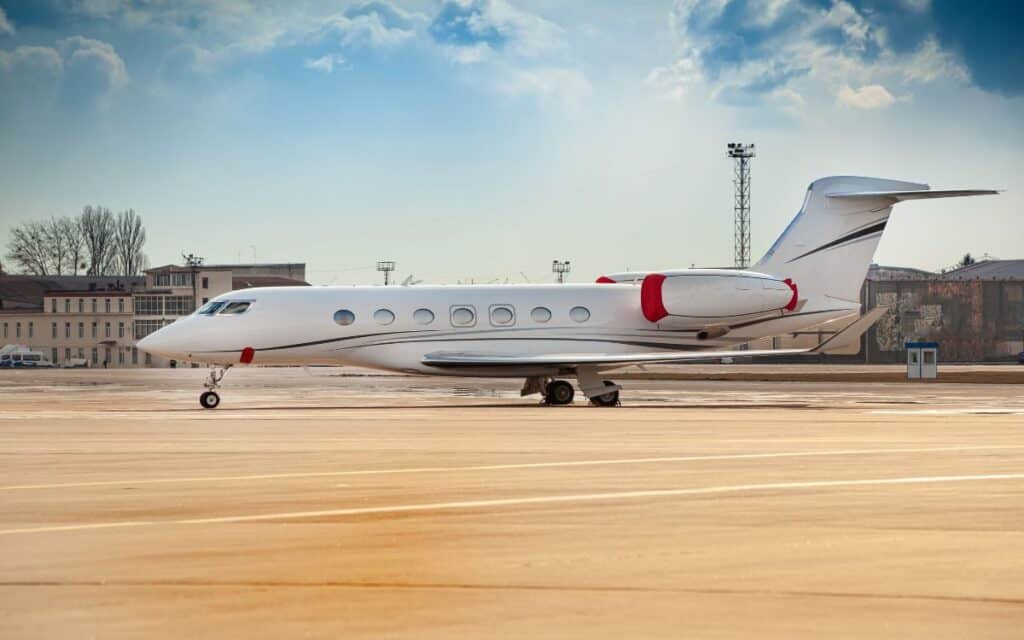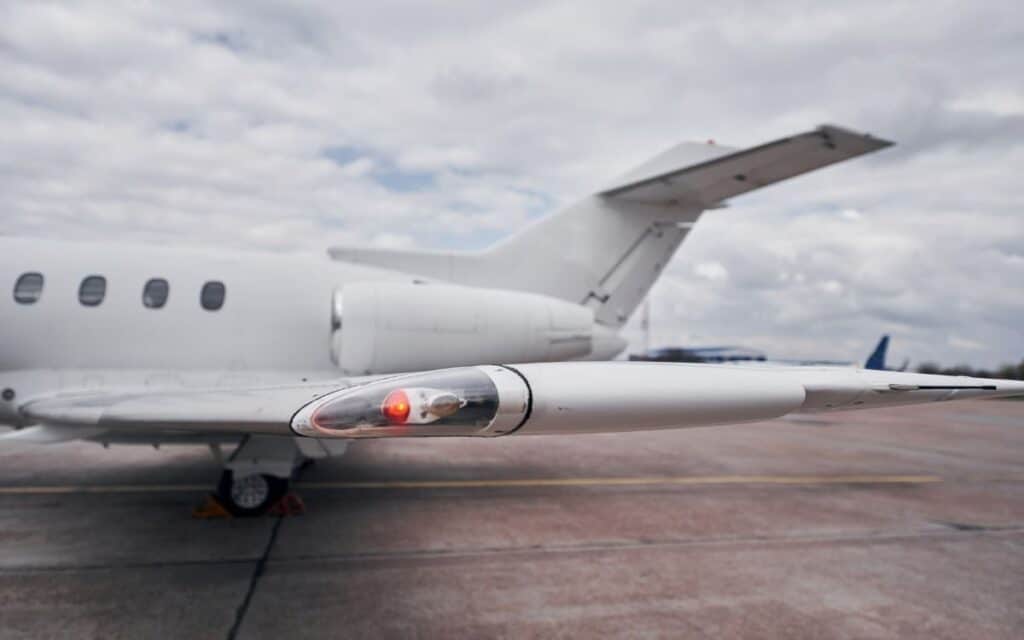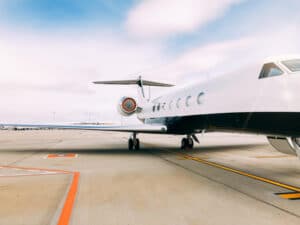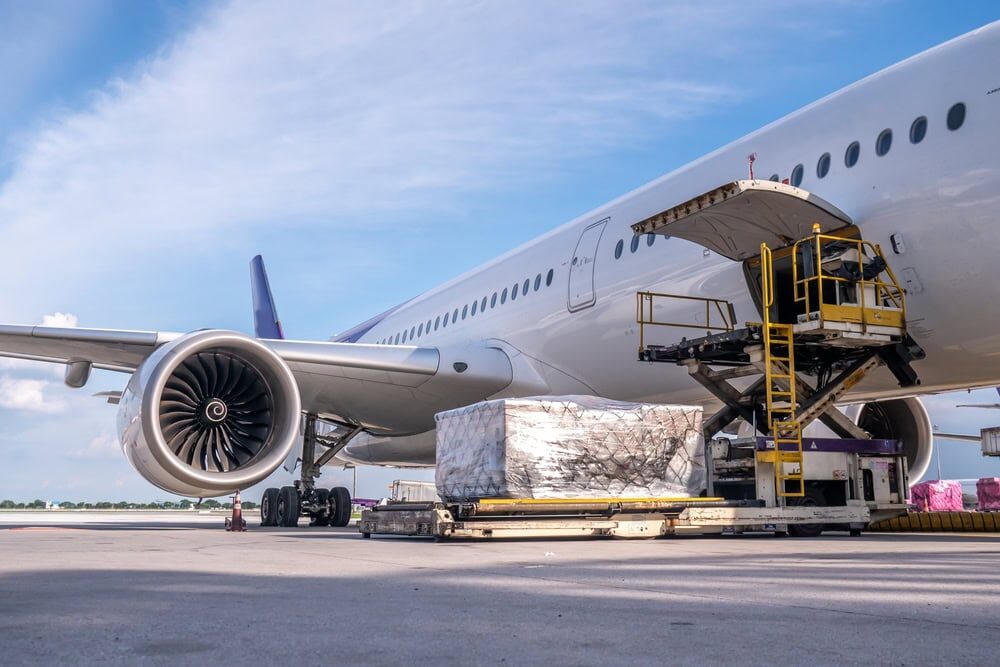Private jet ownership represents the pinnacle of aviation freedom—access to over 5,000 airports worldwide versus the 500 served by commercial airlines. Yet with new business jets ranging from $3 million for a light jet to $75 million for ultra-long-range aircraft, financing a private jet requires sophisticated financial planning and industry expertise.
Private Jet Finance Calculator
Get instant financing estimates and personalized reports
📧 Get Your Detailed Report
Receive a comprehensive analysis with financing options and recommendations.
The aircraft finance market has evolved dramatically. Traditional banks now compete with specialized aviation lenders, asset-based financiers, and innovative lease structures. Interest rates fluctuate between 4.5% to 12% depending on creditworthiness, aircraft age, and market conditions according to FAA financing guidance.
Here’s the reality: over 85% of private jets are financed rather than purchased outright, making private jet finance knowledge essential for smart operators. This comprehensive guide reveals proven strategies for securing optimal aircraft financing, from traditional loans to cutting-edge lease arrangements.
We’ll examine real financing scenarios, decode industry terminology, and introduce you to the top aviation finance companies transforming jet ownership accessibility. For related insights, explore our guides on how to finance a private jet and financing vs leasing a private jet.
Understanding Private Jet Finance: Your Options Decoded
Private jet financing encompasses multiple financial instruments designed specifically for aircraft acquisitions. Unlike automotive loans, aircraft finance involves complex regulations, international considerations, and substantial collateral valuations.
Traditional Secured Aircraft Loans
Bank-sponsored jet finance operates similarly to commercial real estate lending. The aircraft serves as primary collateral, with loan-to-value ratios typically 70-90% for newer aircraft. Fixed rates currently range 5.5-8.5% for qualified borrowers, with terms extending 5-20 years according to NBAA finance guidelines.
Credit requirements are stringent. Lenders expect minimum credit scores of 700+, substantial liquid assets (often 2-3x annual debt service), and proven income streams. Personal guarantees are standard, even for corporate acquisitions. Understanding aircraft insurance requirements is crucial, as comprehensive coverage directly impacts financing approval and terms.
Asset-Based Aviation Finance
Asset-based loans focus on aircraft value rather than borrower creditworthiness. These non-recourse loans offer faster approvals—often 48-72 hours versus weeks for traditional financing. Interest rates run 2-4 percentage points higher, but qualification requirements are relaxed.
This financing suits high-net-worth individuals seeking privacy, international buyers, or time-sensitive transactions. Asset-based lenders typically finance 60-80% of aircraft value, requiring larger down payments but minimal financial disclosure.
Aircraft Leasing Structures
Operating leases provide aircraft access without ownership burdens. Monthly payments cover depreciation, maintenance reserves, and insurance. Lease terms typically span 3-10 years, with options to purchase, extend, or return the aircraft. This structure works particularly well for small private jets where operators want flexibility without long-term commitments.
Finance leases (capital leases) offer ownership benefits with lease payment structures. The lessee assumes ownership risks and benefits, including depreciation tax advantages per IRS aviation guidelines. At lease end, the aircraft transfers to the lessee for nominal amounts.

Step-by-Step Aircraft Financing Process
Securing optimal private jet financing requires methodical preparation and strategic timing. Here’s how savvy operators navigate the process:
Phase 1: Pre-Qualification and Strategy
Market Analysis: Research current interest rates and lending conditions. Aviation finance markets fluctuate based on economic conditions, aircraft supply, and regulatory changes. Q4 2024 data shows increased lender appetite for business aviation assets according to Aircraft Finance Insider reports.
Financial Preparation: Gather three years of financial statements, tax returns, and asset documentation. Corporate buyers need additional materials: board resolutions, operating agreements, and certificate of good standing. Understanding tax benefits of aircraft ownership can significantly impact your financing strategy.
Credit Optimization: Review credit reports and address any issues months before application. Consider timing major purchases or credit events to avoid impacting jet finance qualification.
Phase 2: Aircraft Selection and Valuation
Market Evaluation: Engage qualified aircraft appraisers for independent valuations. Lenders rely on these assessments for loan-to-value calculations. Expect appraisal costs of $5,000-15,000 depending on aircraft complexity. Consider reviewing aircraft manufacturers to understand which brands hold value best for financing purposes.
Pre-Purchase Inspection: Comprehensive inspections cost $25,000-75,000 but protect against costly surprises. Lenders often require inspections for older aircraft or those with maintenance issues. For specific aircraft types, see our guides on Cessna Citation and Embraer Legacy financing considerations.
Title Search: Verify clear aircraft title through FAA records and international registries. Title issues can derail financing or create future complications.
Phase 3: Lender Selection and Negotiation
RFP Process: Solicit proposals from multiple lenders. Include traditional banks, specialized aviation financiers, and alternative lenders. Compare not just rates, but terms, prepayment penalties, and relationship benefits.
Term Sheet Analysis: Evaluate interest rate structures (fixed vs. variable), amortization schedules, and collateral requirements. Some lenders offer step-down rates or relationship pricing.
Documentation Review: Aviation loan documents are complex. Engage experienced aviation attorneys to review security agreements, UCC filings, and international registration requirements.
Leading Private Jet Finance Companies: Your Best Financing Partners
Selecting the right finance company is crucial for securing favorable terms and smooth transaction processes. Here are five industry-leading private jet finance specialists that consistently deliver competitive rates and exceptional service:
1. Global Jet Capital
Specialization: New and pre-owned aircraft finance
Loan Terms: Up to 20 years
Current Rates: 5.25% – 8.75% APR
Global Jet Capital focuses exclusively on business aviation finance, offering both secured loans and lease options. They provide financing for aircraft valued from $3 million to $100+ million. Their specialized knowledge of aircraft values and market conditions often results in more favorable underwriting decisions than traditional banks.
Key Advantages: Industry expertise, competitive rates, and streamlined approval processes. They maintain relationships with major OEMs and can facilitate new aircraft deliveries.
2. BOK Financial Aviation Finance
Specialization: Comprehensive aviation financing solutions
Loan Terms: 5-25 years
Current Rates: 4.95% – 9.25% APR
BOK Financial’s Aircraft Finance division provides both traditional secured loans and operating leases. They offer competitive fixed and variable rate options, with particular expertise in financing Cessna, Gulfstream, and Bombardier aircraft. Their relationship-based approach often results in better terms for repeat customers.
Key Advantages: Flexible terms, established OEM relationships, and comprehensive banking services including treasury management and foreign exchange.

3. Wells Fargo Equipment Finance
Specialization: Large-scale aircraft financing
Loan Terms: Up to 25 years
Current Rates: 5.50% – 8.95% APR
Wells Fargo handles high-value transactions typically exceeding $5 million. They offer sophisticated financing structures including sale-leaseback arrangements and cross-border transactions. Their extensive banking relationships often provide additional benefits like treasury management services.
Key Advantages: Large transaction capability, international expertise, and comprehensive banking relationships for complex deals.
4. AIRCRAFT FINANCE CORPORATION (AFC)
Specialization: Asset-based lending and alternative structures
Loan Terms: 5-20 years
Current Rates: 6.50% – 11.25% APR
AFC offers asset-based lending with minimal documentation requirements. They’re known for quick approval processes (often within 48-72 hours) and flexible terms. Their portfolio includes financing for jets, turboprops, and helicopters with loan amounts from $500,000 to $50 million.
Key Advantages: Speed of execution, flexible qualification criteria, and willingness to finance unique or challenging transactions.
5. ARPS Finance
Specialization: Alternative aviation financing and engine finance
Loan Terms: Customized terms 3-15 years
Current Rates: 7.25% – 12.50% APR
ARPS Finance specializes in non-traditional financing solutions, including credit-challenged borrowers and unique aircraft types. They offer engine leasing trading and finance, making them ideal for operators needing flexible arrangements or those with complex financing requirements.
Key Advantages: Creative financing structures, engine and component financing, and solutions for challenging credit profiles.
Navigating Current Market Conditions and Financing Challenges
The aircraft finance landscape in 2025 reflects broader economic conditions while maintaining unique aviation market characteristics. Current challenges include:
Interest Rate Environment
Federal Reserve policies directly impact aviation lending rates. Current rates remain elevated compared to 2020-2021 levels, with prime-plus structures common according to Federal Reserve economic data. Variable rate loans offer initial savings but carry refinancing risk as rates change.
Strategy: Consider rate protection through caps or collars. Fixed-rate financing provides certainty but typically costs 0.5-1.0% premium over variable rates. For operators considering affordable private jets, financing strategy becomes even more critical to total ownership costs.
Aircraft Inventory and Valuations
Limited new aircraft production and strong demand support aircraft values. However, older aircraft (15+ years) face financing challenges as lenders tighten age restrictions.
Market Intelligence: Pre-owned aircraft in the 5-10 year range offer optimal financing terms and value retention. Ultra-long-range jets maintain strongest resale values and easiest financing.
Regulatory Considerations
International financing involves complex regulations according to ICAO financing standards. Part 135 charter operations face additional scrutiny due to commercial use implications. Ensure financing structures accommodate operational requirements and understand how becoming a professional pilot or operating commercially affects financing terms.
Tax Benefits and Strategic Financial Considerations
Private jet financing offers significant tax advantages when structured properly. Understanding these benefits can substantially impact ownership economics:
Depreciation Benefits
Under current tax law according to IRS Section 168(k), business aircraft qualify for 100% bonus depreciation, allowing immediate expense deduction of the aircraft’s full cost. This benefit phases down after 2025, creating urgency for strategic buyers. Understanding aircraft depreciation trends is crucial for financing decisions.
Section 179 Deduction: Allows immediate expensing up to $1.16 million for qualifying aircraft. Combined with bonus depreciation, this creates powerful tax planning opportunities.
Interest Deduction Strategies
Aircraft loan interest remains deductible for business use. Mixed-use aircraft (business and personal) require careful documentation to maximize deductible interest amounts.
State Tax Considerations
Aircraft registration and sales tax vary dramatically by state. Some states offer exemptions for non-resident owners or specific use cases. Aircraft finance structures can be optimized for favorable tax treatment.
Example: Delaware registration combined with proper financing structures can minimize ongoing tax obligations while maintaining operational flexibility. For international operations, review our coverage of European private jet airports and Asia private jet airports to understand regional financing implications.

Advanced Financing Strategies for Sophisticated Operators
Sale-Leaseback Arrangements
Existing aircraft owners can unlock capital through sale-leaseback transactions. Sell the aircraft to a lessor, then lease it back for continued use. This generates immediate liquidity while maintaining operational control.
Benefits: Capital generation, potential tax advantages, and maintained aircraft access. Considerations: Higher long-term costs and reduced equity appreciation.
Cross-Border Financing
International financing offers rate arbitrage opportunities and currency hedging benefits. European lenders often provide competitive rates for U.S. aircraft acquisitions.
Complexity Factors: Multi-jurisdictional regulations, currency exposure, and documentation requirements. Engage specialists for cross-border transactions.
Frequently Asked Questions
Q1: What credit score do I need for private jet financing?
Answer: Most lenders require minimum credit scores of 700+ for traditional aircraft finance. Asset-based lenders may accept lower scores but charge higher rates. Ultra-high-net-worth individuals with complex financial situations should consider asset-based alternatives.
Q2: How much down payment is required for aircraft financing?
Answer: Down payments typically range 10-30% of aircraft value. Newer aircraft and strong credit profiles qualify for lower down payments. Asset-based loans often require 20-40% down payments but offer faster approvals.
Q3: Can I finance a used private jet?
Answer: Yes, financing is available for both new and pre-owned aircraft. Lenders prefer aircraft under 15-20 years old, though specialized lenders finance older aircraft at higher rates. Pre-owned aircraft often offer better value and faster delivery.
Q4: What’s the typical loan term for private jet financing?
Answer: Jet finance terms typically range 5-20 years, with longer terms available for newer, higher-value aircraft. Shorter terms offer lower total interest costs but higher monthly payments.
Q5: Are there tax benefits to financing vs. purchasing outright?
Answer: Financing preserves capital for other investments while maintaining aircraft depreciation benefits. Interest payments are generally tax-deductible for business use. Consult tax professionals for specific situations.
Q6: How does aircraft financing differ from other asset financing?
Answer: Aircraft finance involves unique regulations, international considerations, and specialized appraisal requirements. Aviation lenders understand aircraft values, maintenance requirements, and operational complexities better than traditional lenders.
Q7: Can I use my aircraft for charter to help offset financing costs?
Answer: Yes, but charter operations require Part 135 certification and impact financing terms. Some lenders restrict charter use or require additional insurance coverage. Revenue potential varies significantly by aircraft type and market.
Q8: What happens if I default on my aircraft loan?
Answer: Aircraft repossession follows specific aviation procedures. Lenders must comply with FAA regulations and international treaties. Strong initial financing and proper insurance protect against default scenarios.
Q9: How long does the aircraft financing process take?
Answer: Traditional financing typically requires 30-60 days from application to closing. Asset-based lenders can close within 1-2 weeks for straightforward transactions. Complex international deals may require 90+ days.
Q10: Should I consider leasing vs. financing for my first aircraft?
Answer: Leasing offers lower initial costs and reduced maintenance responsibility. Financing builds equity and provides full ownership benefits. Consider your usage patterns, tax situation, and long-term aviation plans.
Q11: How do interest rates for aircraft financing compare to other loans?
Answer: Aircraft finance rates typically run 1-3 percentage points above prime rate, reflecting specialized collateral and market conditions. Rates vary based on creditworthiness, aircraft age, and loan terms.
Q12: Can international buyers access U.S. aircraft financing?
Answer: Yes, many U.S. lenders finance international buyers, though requirements vary. Foreign buyers often need U.S. entities or additional documentation. Asset-based lenders typically offer more flexibility for international transactions.
Conclusion
Private jet financing in 2025 offers unprecedented opportunities for qualified buyers willing to navigate complex aviation finance markets. Interest rates remain elevated but competitive, aircraft values stay strong, and innovative financing structures continue emerging.
Success requires three elements: thorough preparation, strategic lender selection, and expert guidance throughout the process. Whether pursuing traditional bank financing, asset-based alternatives, or sophisticated lease arrangements, understanding your options maximizes both financial efficiency and operational flexibility.
The aviation finance landscape rewards preparation and patience. Start planning early, build relationships with multiple lenders, and engage qualified professionals to structure optimal financing solutions. Your dream of private jet ownership becomes reality through informed financial decisions and strategic execution.
For complex transactions or unique circumstances, consider engaging aviation finance specialists who understand both regulatory requirements and market dynamics. The investment in proper guidance often pays dividends through better terms and smoother transactions.
Ready to explore aircraft financing options? Begin with financial preparation, market research, and preliminary lender discussions. The sky truly becomes the limit when financing is structured strategically and executed professionally.
Authors
-
Radu Balas: Author
Pioneering the intersection of technology and aviation, Radu transforms complex industry insights into actionable intelligence. With a decade of aerospace experience, he's not just observing the industry—he's actively shaping its future narrative through The Flying Engineer.
View all posts Founder
-
Cristina Danilet: Reviewer
A meticulous selector of top-tier aviation services, Cristina acts as the critical filter between exceptional companies and industry professionals. Her keen eye ensures that only the most innovative and reliable services find a home on The Flying Engineer platform.
View all posts Marketing Manager
-
Marius Stefan: Editor
The creative force behind The Flying Engineer's digital landscape, meticulously crafting the website's structure, navigation, and user experience. He ensures that every click, scroll, and interaction tells a compelling story about aviation, making complex information intuitive and engaging.
View all posts Digital Design Strategist


















